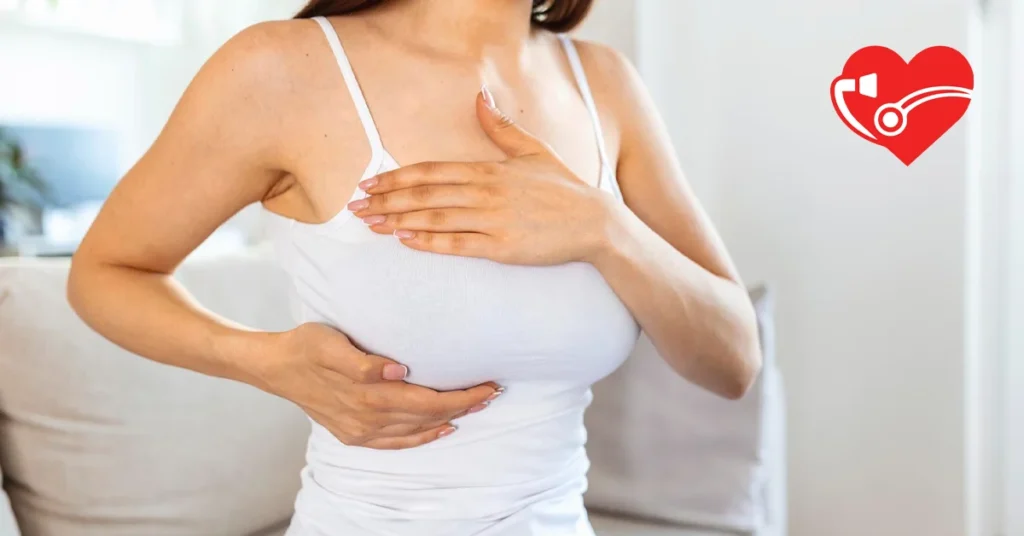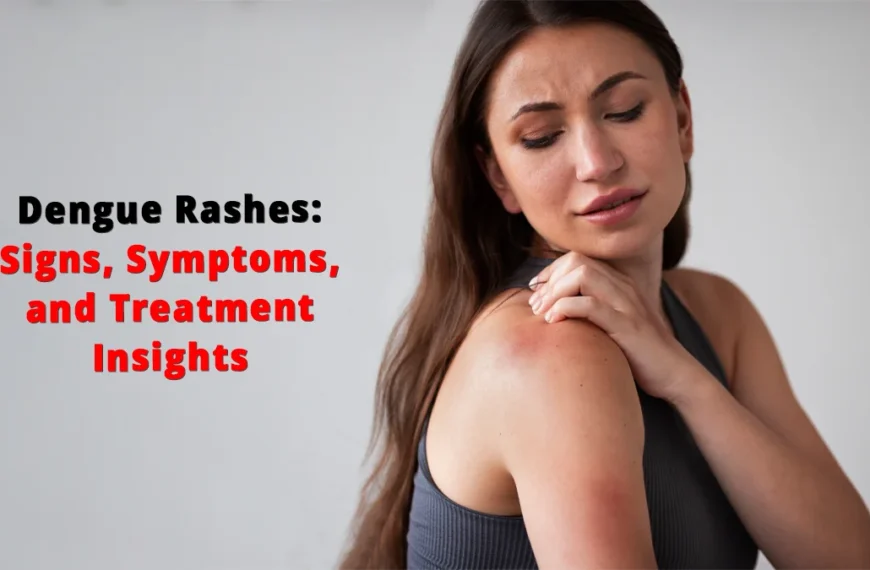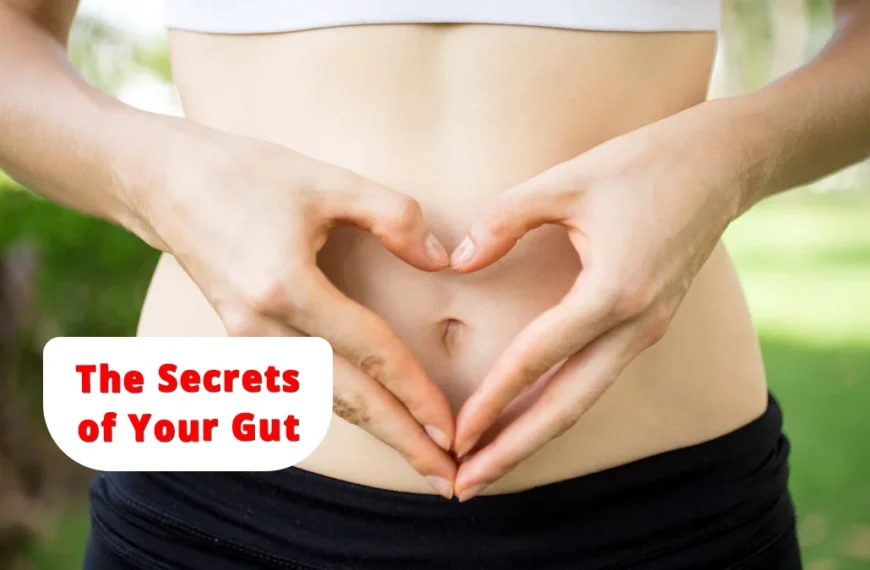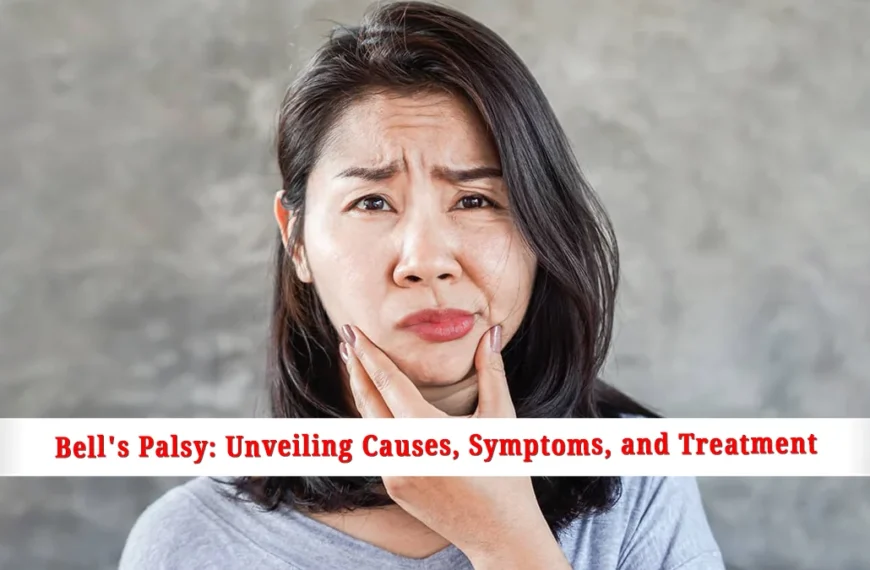If you are a menstruating woman, you may have noticed some changes in your body during your menstrual cycle. One such change that some individuals experience is breast pain or tenderness. This discomfort often leads to questions like, “Do breasts hurt during ovulation?” In this article, we will explore the connection between ovulation and breast pain in simple terms, without resorting to complex medical jargon.

- Introduction
- Common Symptoms of Ovulation
- Hormonal Changes During Ovulation
- Types of Breast Pain During Ovulation and Their Causes
- Reasons for Breast Pain During Ovulation
- When Should I be Worried about Breast Pain?
- Home Remedies for Breast Pain During Ovulation
- Our Other Latest Articles
- Frequently Asked Questions (FAQs)
Introduction
Ovulation is a fundamental physiological process that plays an important role in the reproductive cycle of women. It signifies the release of a mature egg from the ovary, making it available for fertilization by sperm. Ovulation is an important event in the menstrual cycle, and its understanding is essential for those trying to conceive as well as those aiming to better understand their reproductive health.
During each menstrual cycle, a woman’s body goes through various hormonal fluctuations that eventually lead to ovulation. This complex process is primarily driven by hormones such as luteinizing hormone (LH) and follicle-stimulating hormone (FSH), which are produced by the pituitary gland. The main purpose of ovulation is to release a viable egg into the fallopian tube, where it can potentially meet with sperm and result in fertilization.
Common Symptoms of Ovulation
While ovulation itself is an internal process, the body often exhibits some subtle signs and symptoms that may indicate this fertile phase. These symptoms are experienced by some women, but not all women, and can vary in intensity from cycle to cycle. Recognizing these clues can be especially useful for couples trying to conceive, as they provide valuable insight into the optimal timing for intercourse.
1. Changes in Cervical Mucus: As a woman approaches ovulation, there are different changes in her cervical mucus. It becomes clear, slippery and more pliable, similar to raw egg white. This type of mucus facilitates the movement of sperm through the reproductive tract, increasing the chances of fertilization.
2. Increased libido: Some women experience increased sex drive around the time of ovulation. This increase in libido is believed to be influenced by hormonal changes in the body.
3. Mild pelvic pain or Mittelschmerz: Some women feel cramping or mild pain on one side of the lower abdomen during ovulation. This discomfort, known as mittelschmerz, is believed to result from the release of an egg from the ovary.
4. Breast tenderness: Hormonal changes during ovulation can lead to breast tenderness or sensitivity. This symptom is similar to what some women experience before menstruation.
5. Change in basal body temperature: Basal body temperature (BBT) rises slightly after ovulation. Tracking BBT can help determine the time of ovulation and is often used in conjunction with other fertility awareness methods.
6. Ovulation Predictor Kits: These kits detect a rise in luteinizing hormone (LH) in the urine, which usually occurs a day or two before ovulation. It provides advance warning of the fertile window.
7. Abdominal bloating: Some women may feel abdominal bloating or a feeling of fullness around ovulation due to hormonal changes affecting fluid retention.
ALSO READ: Root Vegetables That Help with Quick Weight Loss
Hormonal Changes During Ovulation
When a woman’s body is getting ready to have a baby, some important changes occur. Two hormones, estrogen and progesterone, play a big role in this process.
As the month progresses, estrogen levels increase, and this helps the lining of the uterus grow. When estrogen increases, another hormone called LH also increases. LH tells the body that it is time for the egg to be released from the ovary.
Once the egg is out, the spot where it came from turns into an object called the corpus luteum. This corpus luteum produces progesterone. Progesterone helps the lining of the uterus prepare for the baby if the egg is fertilized.
But if the egg does not meet the sperm and is not fertilized, the corpus luteum dies. When this happens, progesterone levels drop, and this is why the woman menstruates.
So, these hormones together determine when a woman will release an egg and what happens next in her body to have a baby.
Types of Breast Pain During Ovulation and Their Causes
1. Cyclic Breast Pain
- Description: Cyclic breast pain, also known as cyclical mastalgia, is a common type of discomfort that occurs in a rhythmic pattern related to the menstrual cycle.
- Cause: Hormonal fluctuations, especially rising estrogen levels during the first part of the menstrual cycle, can cause enlargement of the mammary ducts and glandular tissue. This expansion can cause tenderness, fullness and mild pain in the breasts during ovulation.
2. Non-Cyclical Breast Pain:
- Description: Non-cyclical breast pain, or non-cyclical mastalgia, does not follow regular menstrual patterns and can occur at any time.
- Causes: This type of pain is often associated with factors other than hormonal changes, such as injury, muscle strain, medications, or benign breast conditions such as fibrocystic changes. Although not directly linked to ovulation, non-cyclical breast pain can sometimes coincide with the ovulation phase.
3. Hormonal Tenderness:
- Description: Hormonal breast tenderness refers to the sensitivity or discomfort experienced in the breasts due to hormonal changes.
- Reason: Estrogen, a hormone that peaks during ovulation, can stimulate breast tissue, causing it to retain fluid and become more sensitive. This increased sensitivity can cause cramping or mild pain during ovulation.
4. Fibrocystic Changes:
- Description: Fibrocystic breast changes involve the development of noncancerous lumps, cysts, or areas of dense breast tissue.
- Causes: Although not limited to ovulation, hormonal fluctuations during the menstrual cycle may contribute to fibrocystic changes. The hormone surge associated with ovulation can cause these changes to exacerbate any problems that may already be present.
5. Muscle Strain and Tension:
- Description: A muscle strain or tension in the chest wall can spread to the breasts, causing pain.
- Causes: Muscle tension related to physical activity, poor posture, or stress can cause discomfort in the chest wall that may be referred to as breast pain.
6. Side Effects of the Medicine:
- Description: Some medications, such as hormonal contraceptives or hormone therapy, can sometimes cause breast tenderness or pain.
- Reason: The hormonal component of these drugs can affect the breast tissue response and cause temporary discomfort.
Reasons for Breast Pain During Ovulation
Breast pain during ovulation, also known as mastalgia, can be caused by a variety of factors, mainly influenced by hormonal fluctuations and physiological changes in the body. Some causes of breast pain during ovulation include:
1. Increase in estrogen: Ovulation is associated with an increase in estrogen levels. Estrogen stimulates the breast tissue, causing it to retain fluid and become more sensitive. This increased sensitivity can cause discomfort and mild pain.
2. Progesterone Effects: While estrogen plays an important role, the increase in progesterone after ovulation can also contribute to breast changes. Progesterone can cause breast tissue to swell and thicken, potentially causing discomfort.
3. Water retention: Hormonal changes, especially an increase in estrogen, can cause water retention in the body. This fluid accumulation can affect the breast tissue, causing it to feel swollen and tender.
4. Changes in blood flow: Hormonal changes during ovulation can affect blood flow to the breasts. The increased blood flow may result in increased blood coagulation and sensitivity.
5. Gland changes: The mammary glands undergo changes in preparation for a possible pregnancy. These changes, influenced by hormonal fluctuations, can cause breast fullness and discomfort.
6. Fibrocystic changes: Some individuals have fibrocystic breast tissue, which may be more sensitive to hormonal changes. During ovulation, hormonal fluctuations can increase the discomfort associated with fibrocystic changes.
7. Individual sensitivity: Everyone’s body reacts differently to hormonal changes. Some individuals may be more sensitive to these fluctuations, which can lead to noticeable breast pain during ovulation.
8. Emotional and psychological factors: Stress, anxiety and emotional tension can affect hormone levels and aggravate physical symptoms such as breast pain.
ALSO READ: Smooth Skin Secrets: Home Remedies for Winter Dryness
When Should I be Worried about Breast Pain?
Generally speaking, when your breasts feel sore, sore or uncomfortable, it is usually not a sign of anything serious. Many people go through times when their breasts are slightly sore, especially when they are menstruating. This type of pain is usually due to the change in hormones in their body.
But if the pain persists long after your period has ended, or your breasts look red, swollen, or are leaking some strange fluid, you should talk to a doctor.
Remember, breast pain is not something that often appears due to breast cancer. In fact, a very small number, less than three out of every hundred people with breast pain, have cancer. There may be other reasons for your pain, such as various health problems or infections. Your doctor is the best person to decide whether you need further tests, based on how you feel, your family health history and your age.
Home Remedies for Breast Pain During Ovulation
Home remedies can often provide relief from mild breast pain during ovulation. Keep in mind that if your breast pain is severe or persistent, it is important to consult a health care professional for proper evaluation and advice. Here are some home remedies that may help ease the discomfort:
1. Warm compress: Applying a warm compress to your breasts relaxes the muscles, improves circulation and reduces pain.
2. Cold Compress: A cold pack or ice wrapped in a cloth can help reduce swelling and numb the area, providing temporary relief from discomfort.
3. Supportive bra: Wearing a well-fitting, supportive bra provides better support to the breast and allows less movement, thereby reducing friction and discomfort.
4. Dietary adjustments: Reducing salt intake can help reduce water retention, which can contribute to breast swelling and pain. Including foods rich in vitamin E, such as nuts, seeds and leafy greens, may also help ease discomfort.
5. Herbal teas: Some herbal teas, such as chamomile or ginger tea, may have anti-inflammatory properties that can provide relief from pain and discomfort.
6. Over-the-counter pain relievers: Over-the-counter pain relievers such as ibuprofen or acetaminophen can help reduce pain and swelling. However, consult a health care professional before using any medications.
7. Flaxseed: Flaxseed contains compounds that can help control hormonal fluctuations. Including ground flaxseeds in your diet can provide relief from breast pain.
8. Evening primrose oil: Some individuals find relief from breast pain by taking evening primrose oil supplements. However, consult a healthcare professional before starting any supplement regimen.
9. Relaxation techniques: Stress and tension can increase the discomfort. Engaging in relaxation techniques such as deep breathing, meditation, or yoga can help ease both physical and emotional symptoms.
10. Avoid caffeine: Reducing your intake of caffeine can help reduce breast tenderness, as caffeine can sometimes aggravate breast pain.
11. Hydration: Staying well hydrated can help prevent fluid retention and reduce breast swelling.
12. Topical creams: Over-the-counter creams containing mild analgesics or anti-inflammatory ingredients can provide local relief when applied to the breasts.
Remember that individual responses to these treatments can vary. It’s a good idea to try a combination of approaches to see what works best for you. If your breast pain persists, worsens, or is accompanied by other associated symptoms, consult a health care professional for proper diagnosis and guidance.
Frequently Asked Questions (FAQs)
Which part of the breast hurt during ovulation?
The intensity can vary, with some women barely noticing it while others may feel quite uncomfortable. Typical symptoms include: tender, sore feeling in the breasts, and pain in and around both nipples.
How do your breasts feel on ovulation day?
Around ovulation, you may feel soreness or pain in your nipples and possibly even in your breasts. The level of discomfort can vary from mild to severe. It is possible to feel pain in one or both nipples.
Is breast pain during ovulation normal?
The most common type of breast pain is associated with the menstrual cycle and is almost always hormone related. In some women, the pain may start around ovulation and last until the start of their period.
How long do your breasts stay sore after ovulation?
Sometimes, after ovulation, your breasts may feel sore. In some people, this pain can last for a few days or a week. It is different for each person.
How do I know if my pain is from ovulation?
To determine if your pain is due to ovulation, keep track of its timing. Ovulation pain usually occurs in the middle of your cycle, about 14 days before your period. If you feel mild pain or cramping on one side of your lower abdomen, it is probably ovulation. Consult a doctor if the pain is severe or is accompanied by unusual symptoms.
How to distinguish breast pain from pregnancy or ovulation?
If breast pain occurs at the same time each month, and it usually occurs mid-cycle around ovulation, it is a good indicator that it is caused by ovulation and not pregnancy. Alternatively, if the pain occurs at an unexpected time in your cycle, it could be an early sign of pregnancy.
How can I differentiate between breast pain during ovulation and other types of breast pain?
Several factors are involved in differentiating between breast pain during ovulation and other types. Pain related to ovulation usually occurs in the middle of your cycle, with hormonal fluctuations. This is often a temporary discomfort and affects both breasts. Normal breast pain can last throughout the month and can vary in intensity. If pain persists outside of ovulation, is accompanied by lumps, skin changes, abnormal discharge, or continued concern, it is important to consult a healthcare provider to rule out any underlying problem or concern.
Is breast pain during ovulation a cause for concern?
If breast discomfort subsides after ovulation ends, it probably indicates a connection to your regular hormonal fluctuations. Nevertheless, if the discomfort persists after ovulation and extends to your next menstrual cycle, it may indicate the possibility of an early pregnancy.
Do sore breasts occur 3 days after ovulation?
About 1-3 days after ovulation (DPO), you may begin to experience sensations such as cramping, fatigue, bloating, breast tenderness, and back pain. However, these symptoms mainly result from hormonal adjustments during the luteal phase following ovulation, regardless of whether fertilization has occurred or not.
After ovulation, there is a drop in estrogen levels and a rise in progesterone levels. For some individuals, these changes in progesterone levels can cause breast discomfort or nipple sensitivity. Once pregnancy occurs, progesterone levels will continue to rise, causing changes in the breast tissue that may result in sore nipples or breasts.
Can breast pain during ovulation be a sign of pregnancy?
Experiencing nipple discomfort during or near the expected ovulation period makes pregnancy highly unlikely. On the other hand, if nipple pain appears and intensifies after ovulation, or if it persists beyond the time frame of the expected menstrual cycle, it could be a sign of a possible pregnancy.
Are there any factors that can make breast pain during ovulation worse?
Before ovulation, there is a rise in the levels of estrogen and luteinizing hormone. In some individuals, increased estrogen can stimulate breast tissue, causing breast discomfort. After ovulation, estrogen levels decrease while progesterone levels increase. These fluctuations in progesterone can also cause breast pain or sensitivity in some individuals.
How long does breast pain typically last during ovulation?
The predominant form of breast discomfort is associated with the menstrual cycle and is primarily hormonal in nature. Many women start experiencing pain during the period of ovulation and continue till the start of their menstrual cycle.
Can birth control methods affect breast pain during ovulation?
Breast tenderness or pain can also result from birth control. Although it is normal to experience this sensation during your period, the presence of hormones in birth control can increase the intensity of the pain. Breast tenderness manifests as a heaviness or tender feeling that may spread to your armpit or upper arm. This discomfort occurs in both breasts and usually reaches its peak just before your period.
Can menopause affect breast pain during ovulation?
Perimenopause and menopause can result in sore breasts. This sensation may be similar to burning pain or tenderness. Pain in the breasts can serve as an indicator for various health conditions. In your reproductive phase, such discomfort may indicate pregnancy or act as a precursor to the start of your menstrual cycle.
What kind of breast pain indicates ovulation?
In the presence of ovulation-related symptoms, you may encounter the following: Nipple tenderness. This sensation can emerge at different points in your cycle, extending well beyond the ovulation phase. Hormone-driven breast discomfort related to your menstrual cycle is called cyclical mastalgia.
Is experiencing stabbing pain in the breast common during ovulation?
However, it is most prevalent at the beginning of the cycle or during ovulation. Cyclic breast pain ranges from barely noticeable in some individuals to extremely distressing in others. It is not unusual to experience this discomfort in one breast. Often, it appears as a diffuse pain that starts close to the armpit.
“Good news! Te Mend is now available on WhatsApp & Telegram Channels. Subscribe today through the link and stay updated with the latest news!” Whatsapp & Telegram




